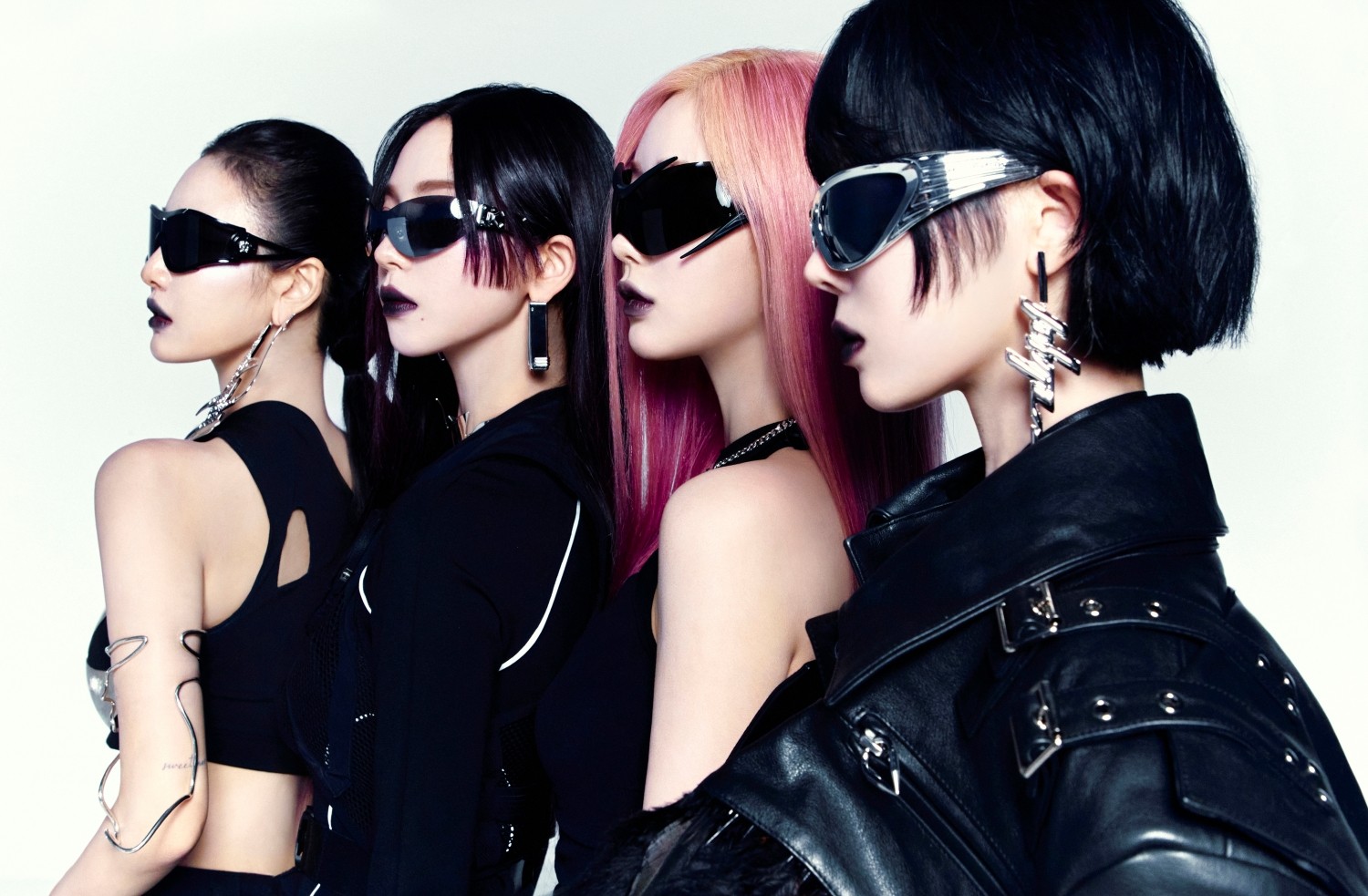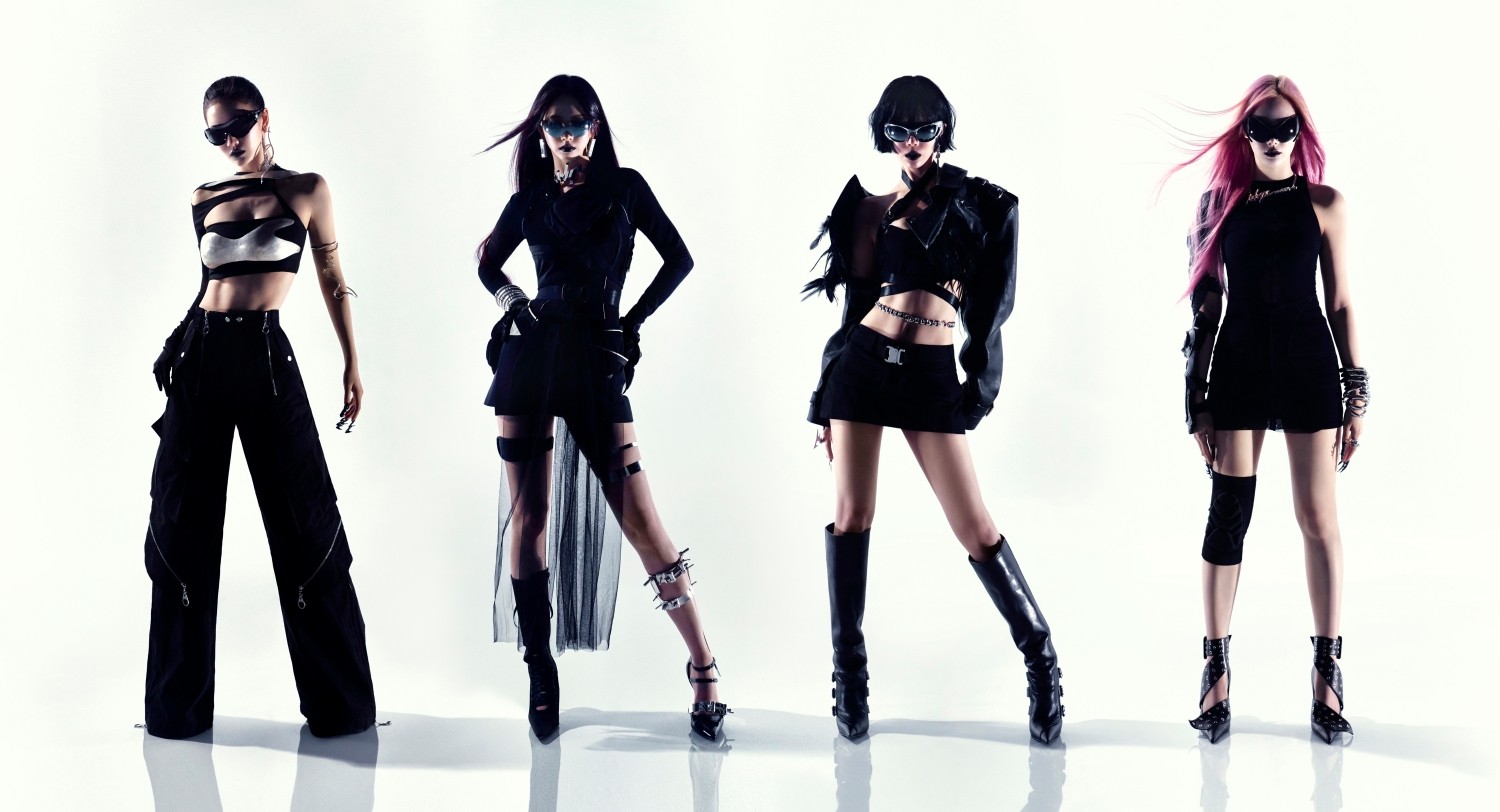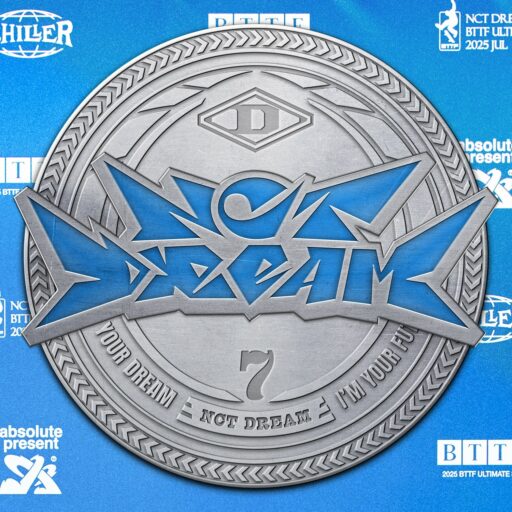
In the midst of the all-white music video set, the aespa members gather as a logo of liquid metal emerges. The world of ‘Whiplash’, reached after passing through the superhuman ‘Supernova’, the mythology-governed ‘Armageddon’, and the colossal ‘Hot Mess’, is a machine civilization ruled by the beauty of speed.
Refined under the hand of director Melting Mirror, known for establishing a unique metallic aesthetic through work with the band Silica-Gel, aespa emerges as the cold, precise humanoid goddesses that Futurists of the 20th century would have worshipped.
The members operate under a system of vertically moving camera tripods, dolly shots moving horizontally on rails, and flashing lights in red, white, and black. In the finely divided cuts of cinema eye’s constantly switching gaze, the expressionless members transition between geometric precision and the free movements of humans.
This makes aespa appear more like androids controlled by artificial intelligence than humans. Bold, poised, the algorithm of the aggressively programmed new humanity heads faster, more tenaciously, and more brilliantly. As Karina steps hard on the accelerator of a car that seems to ‘roar like it’s riding a bullet’, a dazzling future shatters before our eyes.
At the core of aespa’s concept is the unknown. From their debut as protagonists of the SM Culture Universe project, they have faced alter egos that exist beyond reality, battled threatening entities, and encountered unfamiliar worlds through a connection of personas.
As the narrative of the universe and the strength of the vivid personalities diminished, the emotions stemming from this concept evolved into fear. The exciting and fantastical adventures of the digital world, which started with an optimistic view of artificial intelligence, have dissipated, and the tragedy sensed by a hint of unease is unfolding in reality.
Aespa has made themselves an unfamiliar entity. Reviving the lament and anger of end-of-the-century SMP music, they penetrate the modern sentiment of chaos and war on the frontline of disassembled digital worlds, the rapid technological advancements and the chaos of disrupted order. This is why ‘Supernova’ and ‘Armageddon’ can contest for the best K-pop song of 2024.

‘Whiplash’ is more relaxed than the other two. It chooses a cold, static techno genre. With a structure faithful to techno’s formula—repetitive phrases and extremely restrained melodies until the second verse, ignoring the traditional structure of intro, climax, and finale. Even the unique vocals of the members are flattened, showcasing the vocal direction’s insistence.
While ‘Supernova’ and ‘Armageddon’ were consistently ominous and dark, the whip-like beats of ‘Whiplash’ resonate like the stable noise of mechanical assembly. Although it’s a song that has the ‘metallic taste’ often used to describe aespa’s music, it’s a paradoxical track highlighting the most serene and humane aspects.
It’s akin to the experience of feeling infinite camaraderie and humanity among those who dance, letting their bodies and minds drift to the seemingly infinitely repetitive music in a dim and foggy techno club.
Hence, Karina’s response that it has more of an ‘electronic taste’ is accurate. Phrases like ‘Day 1 Know I Been Bad’ and ‘They’re Reasons You’ll Never Understand’ flickering in the middle of the music video repeatedly substantiate this narrative. It’s a notable K-pop track inspired by the ‘brat’ and party girl, club culture elements of 2024 trends led by Charli XCX.
The metallic texture and machine mythology, materialized by the music video, connect with Charli’s hyper pop experiments focused on since the mid-to-late 2010s and provide justification for Grimes, the most radical futuristic musician today under SM’s dance label iScreaM, declaring herself an avid fan with a remix release.
The only blemish in aespa’s journey is that they have not managed to carry the power of their singles and the ideologies they’ve cultivated into a coherent album. In their first full-length album ‘Armageddon’, the similar-themed ‘Set the Tone’ and ‘Mine’ couldn’t step beyond supporting roles compared to the two title tracks, while the succeeding tracks lingered in the unorganized tonal mishmash that is often unavoidable in K-pop full-length albums.
This is a downside felt after experiencing the highest point of ‘Savage’ which was the most unified and diversely charming work. ‘Whiplash’ also shares this concern. The sharp sound samples and standout raps in ‘Kill It’ could fit into aespa’s previous works, any forthcoming albums, or even into an NCT album, but lack a distinct identity.
However, ‘Whiplash’ achieves a result by optimizing several potential tracks to fit aespa, instead of cramming its title track with messages and core images, allowing for the imagination of flexible future movements.

‘Flights, Not Feelings’ and ‘Flowers’, continuing the lineage of SM girl group R&B tracks like S.E.S.’s ‘Be Natural’ and Red Velvet’s ‘Automatic’, and Cazzi Opeia’s ‘Just Another Girl’, reminiscent of TikTok-inspired rock singer-songwriter tracks, all feel natural.
Alongside previously released solo tracks, it hints at ongoing experiments to find styles and songs that suit each member, especially noticeable with ‘Pink Hoodie’, linked to Karina’s ratchet genre solo track ‘Up’, which ranks high on music streaming charts. It’s an effort to reach beyond the machine curtain into reality as the unfamiliar entities on screen extend their hands.
In the music video for ‘Whiplash’, a statement rapidly flashes by: ‘Game Changer Bringin’ The New Era’. At the end of the dazzling visual, the scene of Ningning, Winter, Giselle, and Karina standing in a straight line, gazing at the viewers, looks like a game character selection screen ready to navigate the K-pop game.
Aespa had already been endowed with battle abilities like Rocket Puncher, Armamenter, Xenoglossy, and Hacker during the SMCU era, showcased by utilizing those in the ‘Girls’ music video and universe concepts fighting the antagonist Black Mamba.
In 2024, aespa is in a completely different game. Unlike in the past, where they were expected to play defined roles under a grand narrative, they now have high adaptability metrics that allow them to transform into any form and the ability to move back and forth between the game and reality actively, creating impacts.
This is why the logo emerging as liquid metal at the start of the music video is formed as it is. Aespa is fast, thoughtful, and focused. Their swiftness, versatility, and a certain brazenness propel them as front-runners representing the spirit and values of K-pop.
In the 1909 Futurist Manifesto, Italian poet Filippo Marinetti declared, ‘We affirm that the splendor of the world has been enriched by a new beauty: the beauty of speed.’
Underneath the captivating agitation, the absurdity of a violent and patriarchal society and the seeds of militaristic catastrophe were germinating. Aespa’s mechanized world is different. ‘Whiplash’ celebrates the speed of K-pop and the veneration of protagonists of a new era as a Futurist anthem.
<Photo Source=SM Entertainment>


